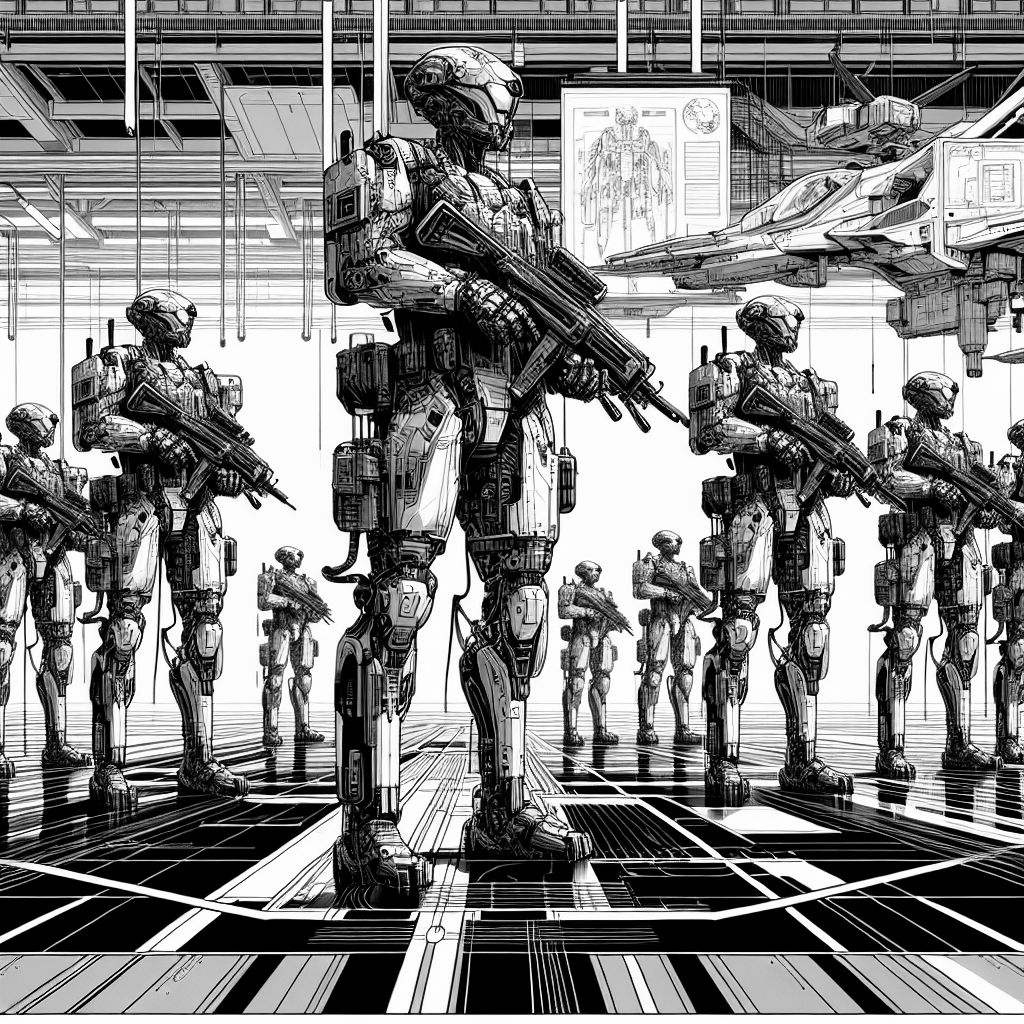SAN FRANCISCO / LONDON (IT BOLTWISE) – A startup from San Francisco is developing humanoid robots for military use. These robots could revolutionize the way wars are fought by serving as the first line of defense on the battlefield. The company plans to produce 10,000 units next year and is actively seeking contracts with the Defense Department.
Today’s daily deals at Amazon! ˗ˋˏ$ˎˊ˗
In the dynamic world of military technology, groundbreaking developments are constantly emerging that could fundamentally change the way wars are fought. One such development is the introduction of humanoid robots specifically designed for use in combat. A San Francisco startup has taken on this challenge and is developing robots that will serve as the first line of defense on the battlefield.
The Phantom MK-1, a humanoid robot developed by the Foundation company, is a notable example of this new technology. With a height of 1.75 meters and a weight of 79 kilograms, this robot can carry up to 20 kilograms. The company plans to produce 10,000 units next year and is actively seeking contracts with the US Department of Defense.
Foundation CEO Sankaet Pathak sees these robots as the future of warfare. He envisions a world in which air, land and naval forces can operate autonomously. However, despite advances in artificial intelligence, these humanoid robots will not be completely autonomous. Human operators will remain in control while AI assists with target acquisition, route planning and trajectory calculation.
The robots will initially be used as ground drones for reconnaissance and defense operations, similar to how aerial drones have developed. Future versions could be armed for offensive operations, bomb disposal and reconnaissance missions. The Foundation company is currently the only known company that develops humanoid robots specifically for military applications.
Competition in this space is fierce, with about two dozen companies developing humanoid robots, with most focused on manufacturing and service applications. Tesla, for example, is developing its Optimus robots for vehicle production. Morgan Stanley predicts that humanoid robots will be widely used by the late 2030s, with the total market potentially reaching over $5 trillion by 2050. Military applications are expected to account for a significant portion of this market.
Pathak acknowledges that China and the US are “neck and neck” in research and development of humanoid robots, although the US lags behind in manufacturing capacity. He predicts that humanoid robots will be deployed first on active battlefields within the next decade, with human soldiers following only when necessary.
Future versions of the Phantom could be faster, stronger and more heavily armed, according to Pathak, who describes the company’s goal of building the “most capable and robust humanoid” for use in extreme environments.
*Order an Amazon credit card with no annual fee with a credit limit of 2,000 euros! a‿z
Bestseller No. 1 ᵃ⤻ᶻ “KI Gadgets”
Bestseller No. 2 ᵃ⤻ᶻ “KI Gadgets”
Bestseller No. 3 ᵃ⤻ᶻ “KI Gadgets”
Bestseller No. 4 ᵃ⤻ᶻ «KI Gadgets»
Bestseller No. 5 ᵃ⤻ᶻ “KI Gadgets”


Please send any additions and information to the editorial team by email to de-info[at]it-boltwise.de. Since we cannot rule out AI hallucinations, which rarely occur with AI-generated news and content, we ask you to contact us via email and inform us in the event of false statements or misinformation. Please don’t forget to include the article headline in the email: “Humanoid Robots: The Future of Warfare?”.
The post Humanoid Robots: The Future of Warfare? appeared first on Veritas News.
